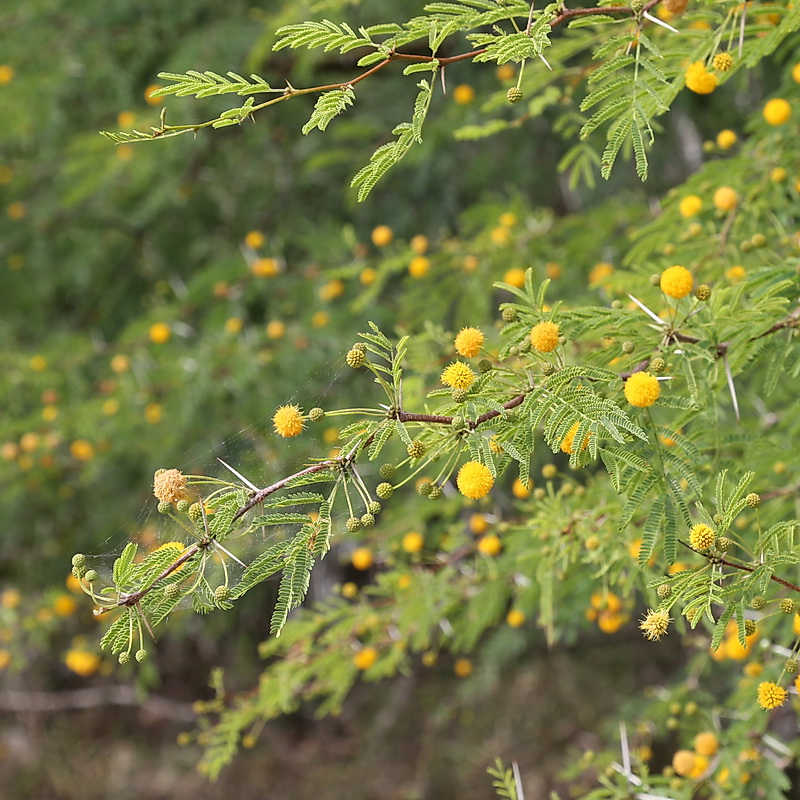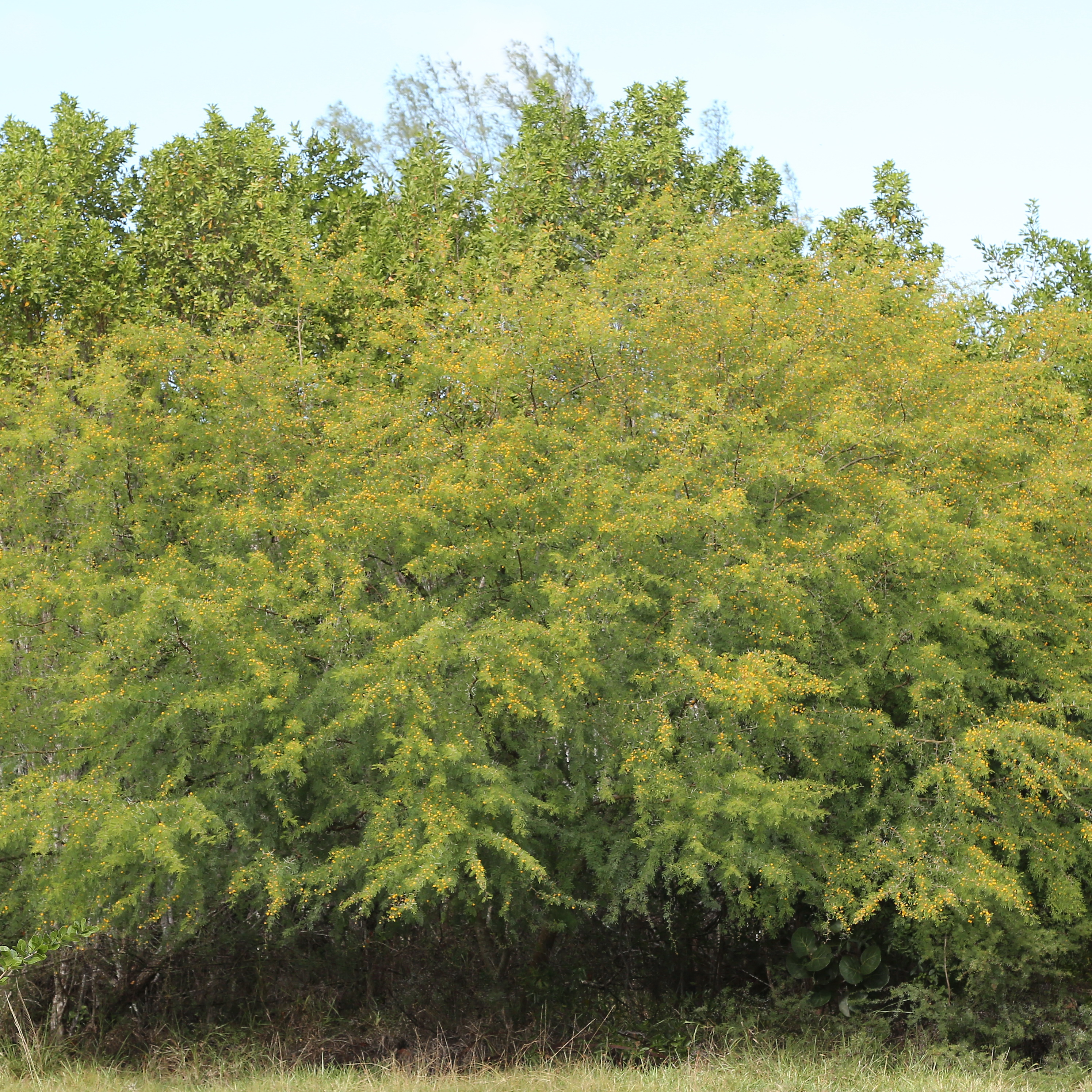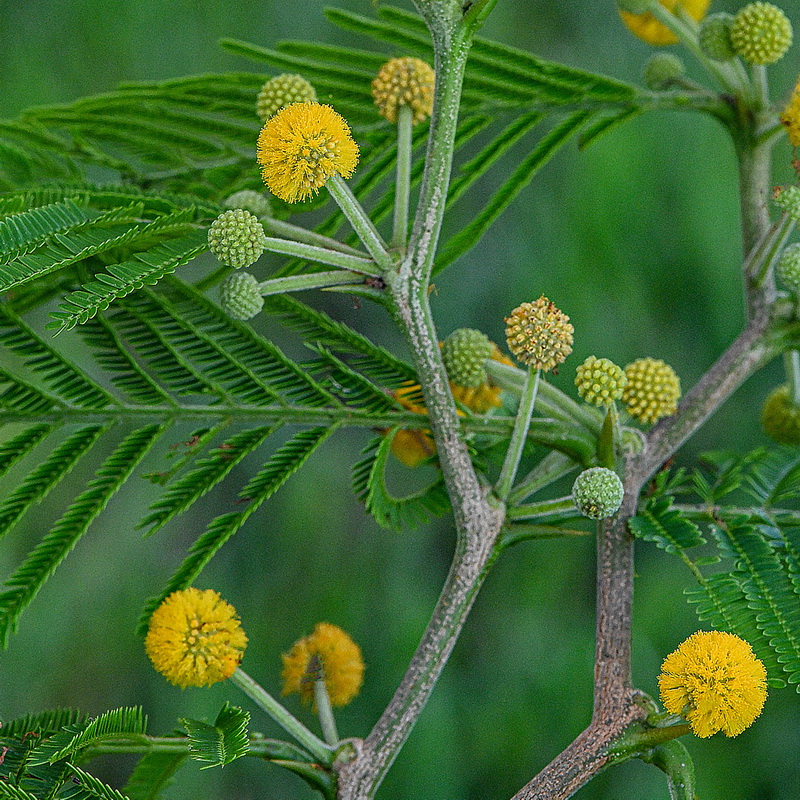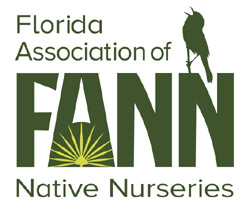Vachellia farnesiana
Photographs belong to the photographers who allow use for FNPS purposes only. Please contact the photographer for all other uses.
Sweet Acacia
Fabaceae (Leguminosae)
Also known as Acacia farnesiana
Plant Specifics
| Form: | Shrub | |
| Size: | 8-20 ft tall by 6-10 ft wide | |
| Life Span: | Long-lived perennial | |
| Flower Color: | Yellow | |
| Fruit Color: | Brown | |
| Phenology: | Evergreen | |
| Noted for: | Aroma, fragrance, Showy flowers, Interesting foliage, Thorns |
Landscaping
| Recommended Uses: | Good for barrier shrub and as wildlife thicket, also nice as specimen. | ||||||||||||||||||||||||||||||||||||||||||
| Considerations: | Thorns on trunks and branches. Place where flowers and fragrance can be enjoyed, but away from walkways. Can suffer from root rot if too wet. | ||||||||||||||||||||||||||||||||||||||||||
| Propagation: | Seeds or cuttings. | ||||||||||||||||||||||||||||||||||||||||||
| Availability: | Native nurseries, Seed | ||||||||||||||||||||||||||||||||||||||||||
| Light: | Full Sun | ||||||||||||||||||||||||||||||||||||||||||
| Moisture Tolerance: |
always floodedextremely dry |
||||||||||||||||||||||||||||||||||||||||||
| (Usually moist, occasional inundation ----- to ----- Somewhat long very dry periods) | |||||||||||||||||||||||||||||||||||||||||||
| Moisture Tolerance: | Usually moist, occasional inundation ----- to ----- Somewhat long very dry periods | ||||||||||||||||||||||||||||||||||||||||||
| Salt Water Flooding Tolerance: | Tolerant of occasional/brief inundation such as can occur in storm surges. | ||||||||||||||||||||||||||||||||||||||||||
| Salt Spray/ Salty Soil Tolerance: | High. Can tolerate significant and ongoing amounts of salty wind and salt spray without injury. | ||||||||||||||||||||||||||||||||||||||||||
| Soil or other substrate: | Sand | ||||||||||||||||||||||||||||||||||||||||||
| Soil pH: | Prefers alkaline soil | ||||||||||||||||||||||||||||||||||||||||||
Ecology
| Wildlife: |
The thorny branches make good cover for birds and other wildlife. Fruits are not generally valued. Attracts pollinators. There are 2 subspecies, V. farnesiana var. farnesiana and V. farnesiana var. pinetorum. Var. pinetorum is rare. It is also smaller. There is a very rare species, Vachellia macranthera, occasionally cultivated. It occurs rarely in extreme south Florida and has been found as a likely storm-deposited waif in a couple of areas on the west coast of FL. If you have it, enjoy it. Culture should be similar to V. farnesiana. | |
| Insects: | Attracts pollinators and uses ants both for protection against unwanted insects. | |
| Native Habitats: | Coastal uplands, ruderal, shell middens |
Distribution and Planting Zones
Natural Range in Florida
USDA Zones
Suitable to grow in:
10A 10B 11 8B 9A 9B
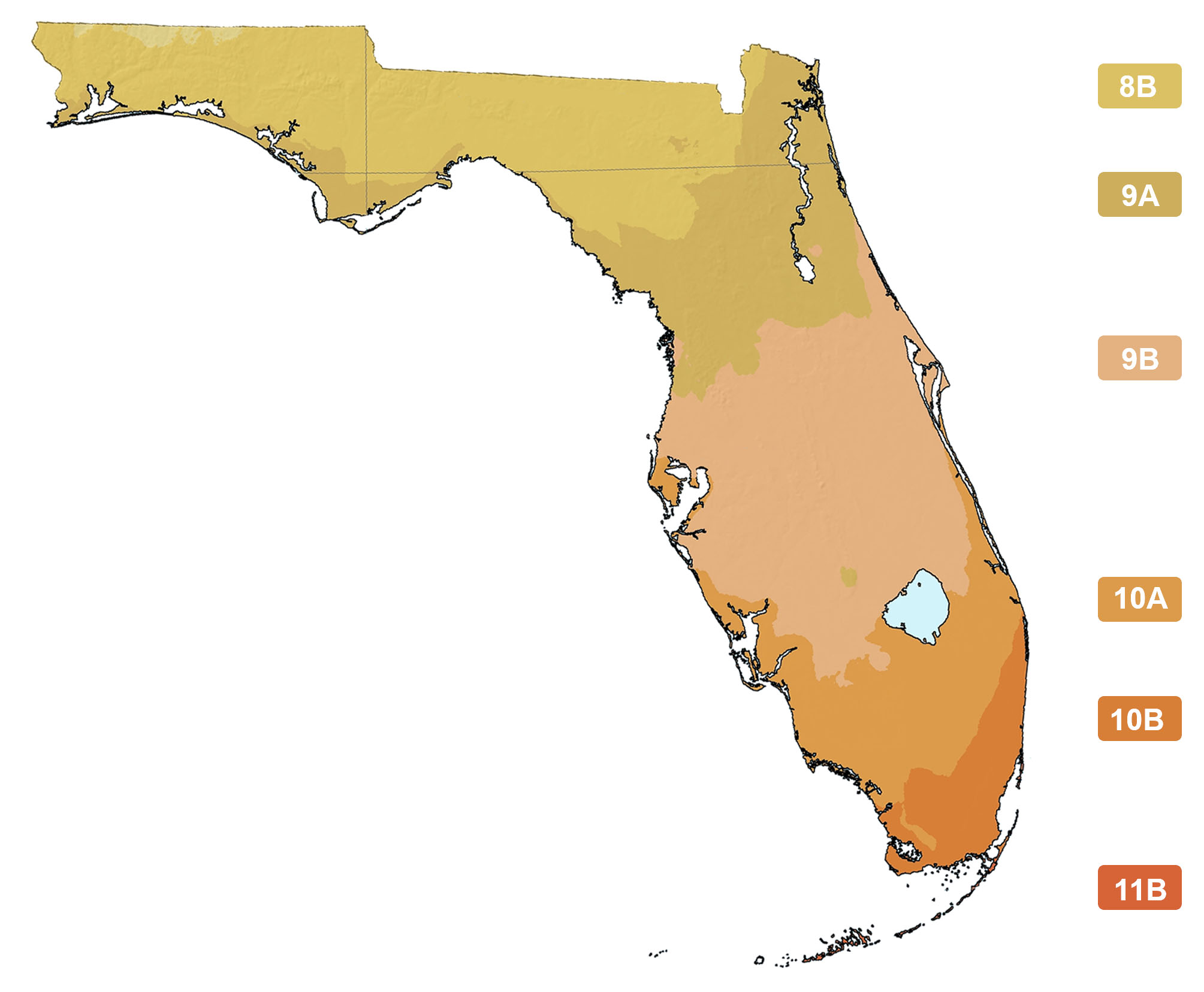
USDA zones are based on minimum winter temperatures
Comments
| Ethnobotany: | In southern Europe, this species is extensively planted for the flowers, which are a perfume ingredient. | |
| General Comments: | Although drought-tolerant, this shrub/small tree may benefit from a few deep, thorough soakings during extremely dry periods. When young, it tends to be multi-trunked, so if a tree form is desired, pruning is required. Very briefly deciduous. Although the range extends further north, it is best used in landscaping where temperatures do not drop below 20 degrees F. |



